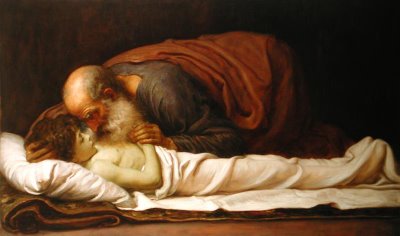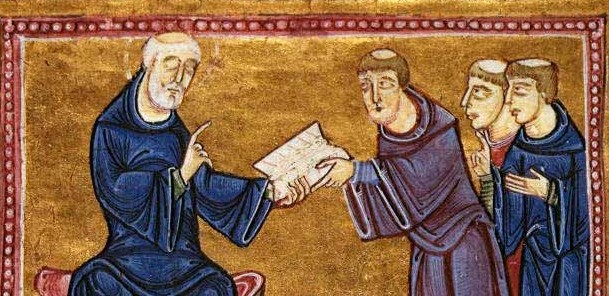
Madonna of the Wheat
Today we hear the parable of the weeds in the field. Jesus explains that,
He who sows good seed is the Son of Man,
the field is the world, the good seed the children of the Kingdom.
The weeds are the children of the Evil One,
and the enemy who sows them is the Devil.
The harvest is the end of the age, and the harvesters are angels.
Just as weeds are collected and burned up with fire,
so will it be at the end of the age.
The Son of Man will send his angels,
and they will collect out of his Kingdom
all who cause others to sin and all evildoers.
They will throw them into the fiery furnace,
where there will be wailing and grinding of teeth.
Then the righteous will shine like the sun
in the Kingdom of their Father.Whoever has ears ought to hear." {Mt 13:37-43]
and they will collect out of his Kingdom
all who cause others to sin and all evildoers.
They will throw them into the fiery furnace,
where there will be wailing and grinding of teeth.
Then the righteous will shine like the sun
in the Kingdom of their Father.Whoever has ears ought to hear." {Mt 13:37-43]
This isn't one of those parables that leaves a warm fuzzy inside. The good news is that Jesus doesn't just leave us with visions of a fiery furnace enmeshed in our minds, because just prior to this parable he speaks of the Weeds and the Wheat living together. He points out that the weeds are planted by the enemy, but then he makes an interesting point. He tells the servants not to pull the weeds out, because they will likewise damage the wheat before the harvest. He further instructs them, "Let both grow together until the harvest."

This is they key in my mind. The two are intertwined, and in a sense are dependent on one another as those seeking sanctification are exhorted to love one's enemies and to pray for them, to practice the virtues, mercy, patience, and goodness. One the other hand, those who are in the weeds at the moment, are always being invited to break free from sin and experience healing and forgiveness through the grace of God and the prayers of their brothers and sisters. It is never too late for a single soul until the very end at harvest time. During our lifetimes, Jesus desires that our souls grow and mature in rich soil. As the "bread of life", He invites all of us to imitate and follow him by being sown, fallen, crushed, buried and resurrected as a grain of wheat falls to the ground and dies, only then bearing good fruit. [See Jn 12:24]
Who better to assist us in this sometimes difficult process than Our Blessed Mother, who is honored under various titles related to this rich imagery? These titles include Madonna of the Wheat, Our Lady of the Loaves, Multiplier of Wheat, and Theotokos She Who Ripens Grain.

Theotokos, She Who Ripens Grain
I don't know about you, but when I am getting a little too close to the weed patch or getting ready to go all in, I know that my Mother is there to keep me safe and protect me from harm. She reminds me of my call to holiness, and her gentle tenderness calls me back to the wheat field where I am still growing and experiencing episodes of my ego being crushed and ground up, just like Jesus' image of his servants who follow Him.

Madonna of the Wheat http://campus.udayton.edu/
As I am seeking to practice the Beatitudes, and to imitate Our Lord and Our Lady, I have the assurance that she is the God-bearer, and was hailed for the "fruit of her womb". She only produces good fruit in her spiritual children through the deft hands of her Spouse, the Holy Spirit, and through the powerful embrace of Our Eucharistic King, who comes to us at the altar of Bread and Wine and nourishes us. In the Song of Songs, the Bridegroom sings the praises of His bride be extolling her beauty as follows, ""Your navel is like a round goblet Which never lacks mixed wine; Your belly is like a heap of wheat Fenced about with lilies." [7:2] This is indeed Our Lady, who held within her Womb the Messiah, whose body and blood was to become the Tree of Life for us in the form of the Eucharist which as the source of our faith sustains us.
Of this we can be assured: Our Lady is fruitful and seeks what is best for us. She wants to multiply blessings for us as so vividly seen at the Wedding Feast of Cana. Just as Our Lord multiplied the loaves of bread and fish, so Our Lady wishes to lead us to the source of all multiplication, Our Lord Jesus. We need only recognize our dependence upon Our Lord, and ask Our Lady to keep us safe in the field, to ensure that we remain amongst the wheat or are converted from weeds to wheat in any areas needing purification.
St. Mary of Jesus Crucified summarized this with an apropos image: The proud person is like a grain of wheat thrown into water: it swells, it gets big. Expose that grain to the fire: it dries up, it burns. The humble soul is like a grain of wheat thrown into the earth: it descends, it hides itself, it disappears, it dies; but to revive in heaven...She further reminds us, "At the feet of Mary I came back to life."
Our Lady, Multiplier of Wheat...Pray for us.
Our Lady of Loaves...Pray for us..





















